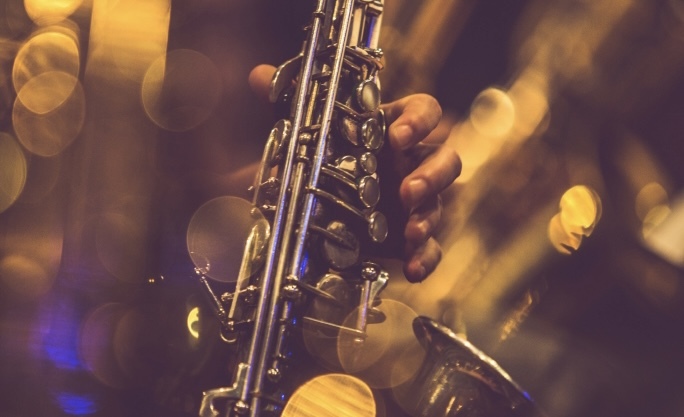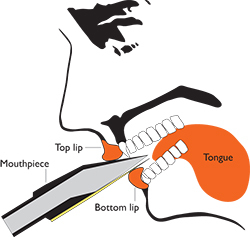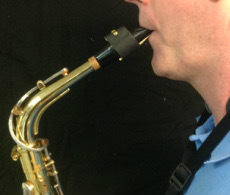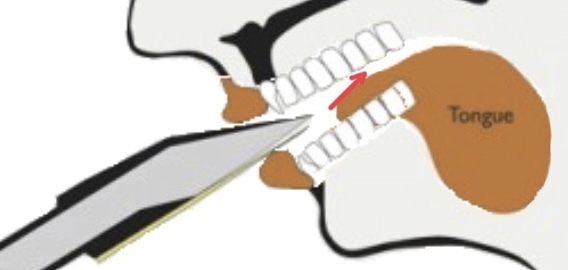
Embouchure has always been a concern of students of saxophone and even students of other wind instruments. Because of the characteristics of wind instruments, we can only find suitable performance strength and state through feeling and experience. Many students may be hindered by problems of embouchure in various degrees when practicing middle-level music or even higher-level music. That is because they did not really learn the embouchure when they first learned saxophone, resulting in the use of a lot of unnecessary strength and breath when performing. Therefore, the higher the difficulty of playing music skills is, the greater the obstacles students will meet.
In fact, the embouchure of saxophone is inevitably affected by teeth, lips, chin, tongue and other body parts. Today, Six Months Rebellion Music will carry out deep analysis on these four main parts, and lead you to experience and feel the correct embouchure of saxophone.
1. Teeth:
Teeth mainly play the role of fixation and connection,when it comes to embouchure, and the upper and lower teeth have different functions. The upper teeth need to be directly contact with the saxophone mouthpiece. At the same time, we can try to locate our upper teeth at 1 / 3 above the mouthpiece, but this position is not absolute. Because everyone's strength, mouthpiece, tip opening and so on are different. So we need to find a position that suits us well when practicing. When performing, you may also have the problem of sliding or wearing of the contact parts. As a result, you need to choose the corresponding specifications of tooth pad and stick it on the mouthpiece for protection and anti-skid treatment.
When playing, the use of the lower teeth is always the most confusing thing. As we usually say, you can't bite the mouthpiece, which means that your lower teeth can't bite vertically upward. The lower teeth can't bite with force because we need to keep the tip opening space of the mouthpiece and ensure the passage of air flow, so that the reed can have sufficient vibration and the tone can be full, mellow and powerful. The lower teeth should be forced forward and downward as a whole, which requires more practice and experience. Of course, this is also the most prone problem for most beginners to make mistakes and it is difficult to be corrected by themselves. Therefore, it is necessary to find a professional teacher to guide them.

2. Lips:
The lips mainly play a role in preventing breath leakagewhen it comes to saxophone embouchure, but at the same time, our lips also have a certain supporting role. When we practice, we must pay attention to exercising the muscles of the mouth, especially the muscles of the lips. Because in later learning, we will find that lip support will become more and more important, and even far more important than teeth, because it can play morebeautiful notes.
We should pay attention that the upper lip, like the upper teeth, should be placed directly above the mouthpiece. The lower lip should wrap around the lower teeth, and it should be noted that wrapping here does not mean wrapping all the teeth. The lower lip mainly plays a role in isolating the lower teeth from directly contacting the reed, creating a space between the teeth and the reed to fully vibrate the reed. The state, strength and even direction of the lower lip should be the same as those of the lower teeth.

3. Chin:
The state of the chin is a standard to check whether we make the correct embouchure. Usually we can know whether a player's embouchure is standard and correct by observing his chin. Because after we make the right embouchure, our chin will naturally be flattened. On the contrary, if our chin is not flattened but crossbows upward, the embouchure is wrong. At the beginning of learning, we can tell whether the embouchure is correct or not according to whether our chin is flat. At the beginning, we may feel that the muscles of our face and mouth are very sour, but after practicing for a period of time, we will find that our mouth muscles have been well exercised, and the tone will also be improved. When you start practicing, you will certainly feel pain and discomfort soon, but you can adjust yourself and practice in groups to get with it. Only in this way can you really exercise the muscles of your mouth to maintain our long-term performance and practice.

4. Tongue:
Many students are puzzled where our tongues should be placed when performing? What should the state of the tongue be?
In fact, when playing saxophone, the state and position of the tongue are very important, which can help us adjust the timbre. When playing saxophone, our tongue should be upturned and inward, but the palate should notbe touched. We can have a try. At this time, the internal feeling of our mouth is opened. The more backward the tongue is, the larger the internal space of our mouth will be. In this way, there will be sufficient breath flow in our mouth. We can also adjust it according to our own preferences and needs. At the same time, we should pay attention to that even if the tongue should be upturned and adducted, it should still be relaxed and should not be too hard to make it rigid.
The above is the deep analysis of saxophone's embouchure brought by the anti moon music. I hope you can practice more frequently according to today's explanation, strengthen the exercise of mouth muscles, and do more experience and endurance practice,so as to make a standard and perfect embouchure as soon as possible.

- Improve Your Saxophone Embouchure Quickly(for beginners)
Embouchure for Beginners:https://youtu.be/DF7BWb1SqOM





